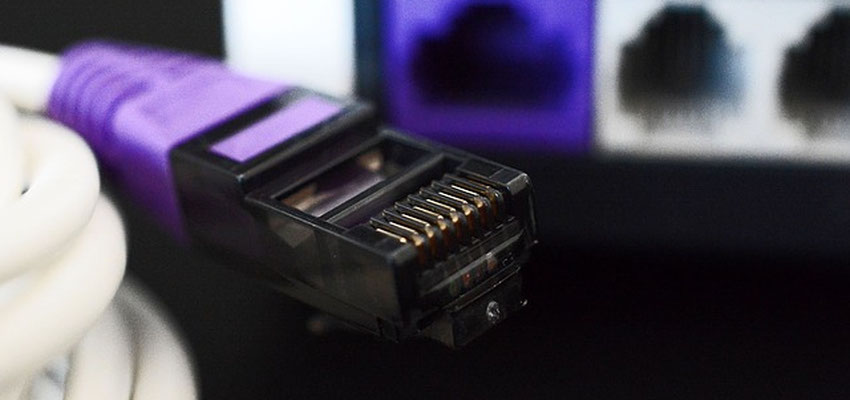
How Fast Is DSL Internet Service?
Posted April 24, 2019, 6:49 p.m. by Michael GAlthough almost half the world’s population uses the Internet, only a small percentage of them know what goes into the functioning of the internet connection they have, what type of internet connection they have, and if it’s the right fit for them.
One of the most popular Internet services is the DSL Internet Service which stands for Digital Subscriber Line. In this article, we’re going to discuss the workings of a DSL connection, how fast it is, and how it compares to other internet connections.
What Is DSL Internet Service?
A Digital Subscriber Line, or DSL as it is more prominently known, takes the help of existing phone lines to give users high-speed internet connections. It does not tie up the lines themselves, as other services such as dial-up internet connections do. DSL uses a modulation scheme to transfer data through copper wires. Unlike dial-up services, the DSL internet connection is always on. There are two major types of DSL connections, ADSL and SDSL-
-
ADSL- The most common type of DSL connection in the United States of America, ADSL stands for Asymmetrical Digital Subscriber Line and it supports speeds up to 9 Mbps for download and up to 640 Kbps for upload. ADSL connections also require a special ADSL modem.
-
SDSL- More common in Europe than in America, SDSL stands for Symmetric Digital Subscriber Line, which allows data to be transferred through existing copper telephone lines. This type of connection supports up to 3 Mbps of data speed and operates by sending digital pulses over telephone wires and hence cannot be operated simultaneously with voice connections over the same wire. SDSL also requires a special modem. It is named Symmetric Digital Subscriber Line since it allows the same speed for both upstream and downstream data transfer.
Two lesser-known and used types of DSL connections are HDSL or High-Data-Rate Digital Subscriber Line and VDSL or Very-High-Data-Rate Digital Subscriber Line. These offer higher speeds over shorter distances, meaning, the shorter the distance, the higher the speed.
DSL Vs. Cable Internet Connection
Apart from the DSL connection, one of the most popular and widely used types of internet service is the Cable Internet Connection. Through the use of preexisting cable TV lines, Cable Internet Connection providers use cable modems to provide you with a broadband internet connection. This provides very fast access to the internet and is widely used since it’s so easy to connect to, due to widely used cable connections.
The discussion about which type of connection is faster has been prominent for a long time. DSL connections offer speeds ranging from 123 Kbps to 3 Mbps, while on the other hand, cable connections operate at twice the speed of that of a DSL. So, the cable internet connection is better right? Well, it depends.
Cable internet connection technology is based on shared bandwidth, meaning that several different factors can affect the upload and download speed, such as too many people using the same connection. For this reason, the speed of a cable connection fluctuates and is not very reliable.
DSL connections, on the other hand, offer personal connections, which means that your connection to the internet will be yours alone and will not be shared by other users. Because of this, you have a more constant and reliable speed with DSL connections.
With the overcrowding of people on Cable connections, the speed of both types of internet connections ends up being similar. This is why cable internet providers use phrases such as ‘with speeds up to…’ instead of actual numbers since cable internet connection tends to fluctuate so much.
DSL Speed
As technology has advanced, DSL speeds have come to par with cable internet connection speeds. In fact, with a high number of shared users in your vicinity, your cable speed can slow down, often to infuriatingly slow speeds. A DSL connection, however, is not shared with others, which means that no matter how many people are using the internet in your vicinity, your speed will be constant.
DSL speeds vary depending on the package options that you select. There are many different packages available for different types of users. AT&T, for example, has packages with speeds from 5 Mbps to 100 Mbps. Faster plans are better suited for people who use the internet for heavy workloads such as gaming or binge-watching.
Slower plans are recommended for people who use the internet mostly for surfing, sending emails, and using social media. There are two types of speeds that you need to look into before deciding on a type of connection and a type of plan-
-
Upload Speed – is the speed that your connection has to send data to another network. This means that your DSL internet connection uses upload speed while sending an email or uploading photos on social media.
-
Download Speed – Download speed, on the other hand, is the speed used when surfing the internet or when downloading a movie. Anything that requires you to receive a file from another network requires download speed.
Causes of Speed Differences
Although DSL connections are generally constant and don’t fluctuate, there can be times when the speed is not optimum. Here are a few reasons for that-
-
Quality of the phone line – Better quality copper wires attain better speeds. Fiber optic cables are even faster.
-
Distance – The distance between the residence and the phone company hub also affects the speed of your DSL connection, since DSL connections are susceptible to decreased performance due to distance.
-
Spyware – If your device contains spyware, it will use your network speed to send information back to the party that deployed it. This uses up your bandwidth and you are left with a slower connection.
